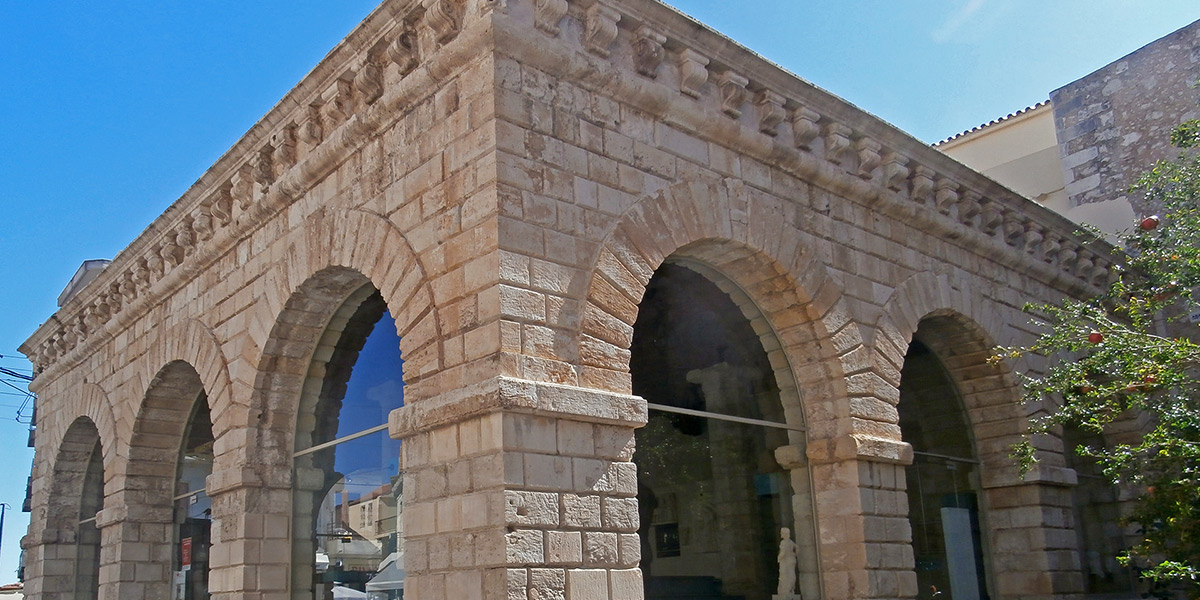The Loggia is probably the oldest building in the city and one of the few that survived the catastrophicraid of 1571, conducted by the Algiers-based pirate Uluj Ali.

It stood at the north-eastern side of the Venetian piazza, overlooking the sea, since there were no buildings on the northern side of Arkadiou str., which was the most important road of the Venetian Rethymnon. It was built in the 16th century, based on a design made by the Veronaarchitect Michele Sanmicheli (who also designed the fortifications of Chania); it followed the example of the Loggia of Venice and of Heraklion, although it did not turn out to be as magnificent as they were. The building has a square plan. Three arches are formed on three of its sides, which spring from square-shaped columns; equally typical are the balcony supports, two on each side. The Loggia, the Rimondi fountain (called Vrisakia by local people), and the no longer extant Clock tower, were the most characteristic monuments in the square which used to stretch along today’s K. Paleologou str.
The Loggia used to be a meeting point for the Venetian nobility, where important decisions were made, as well as a place for entertainment, where gambling was allowed.
During the Turkish occupation it was turned into a mosque, and a minaret, which no longer exists, was added to it; it was demolished in 1930. A fountain with a Turkish inscription used to be at the base of the minaret; this can be seen today in the Central Public Library of Rethymnon.
The Loggia of Rethymnon was restored in 1951 by the Hellenic Archaeological Service, to which it has belonged since 1950. The archaeological museum of the city was housed here for many years. Today, the Loggia is used as a selling point for exact museum copies of the Archaeological Receipts Fund.
Monday - Saturday
09:00 - 15:00 and 17:00 - 21:00
Sunday
Closed




